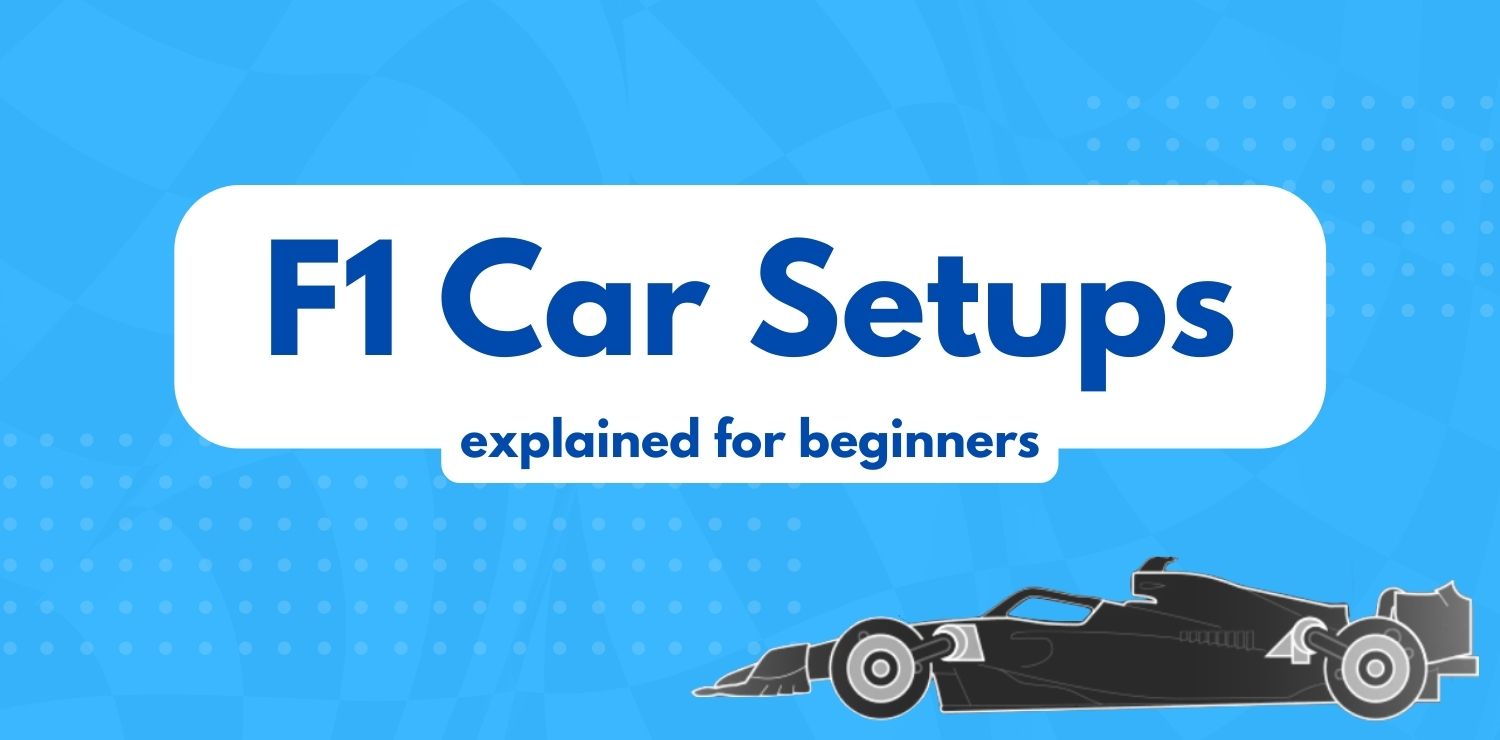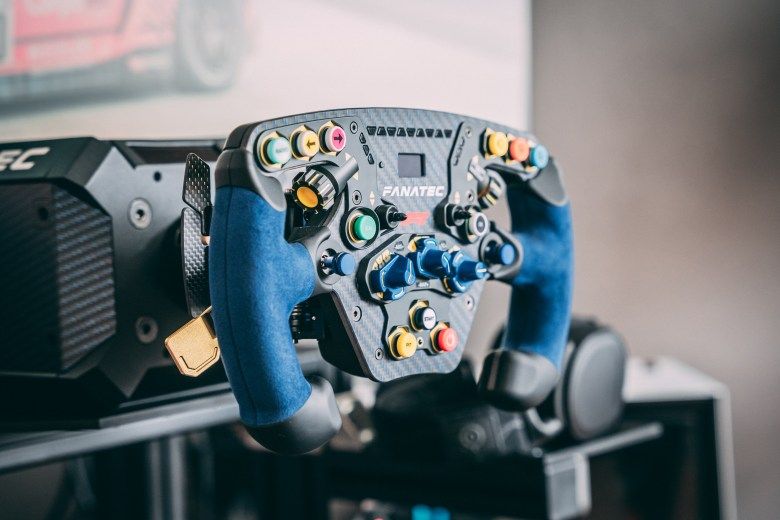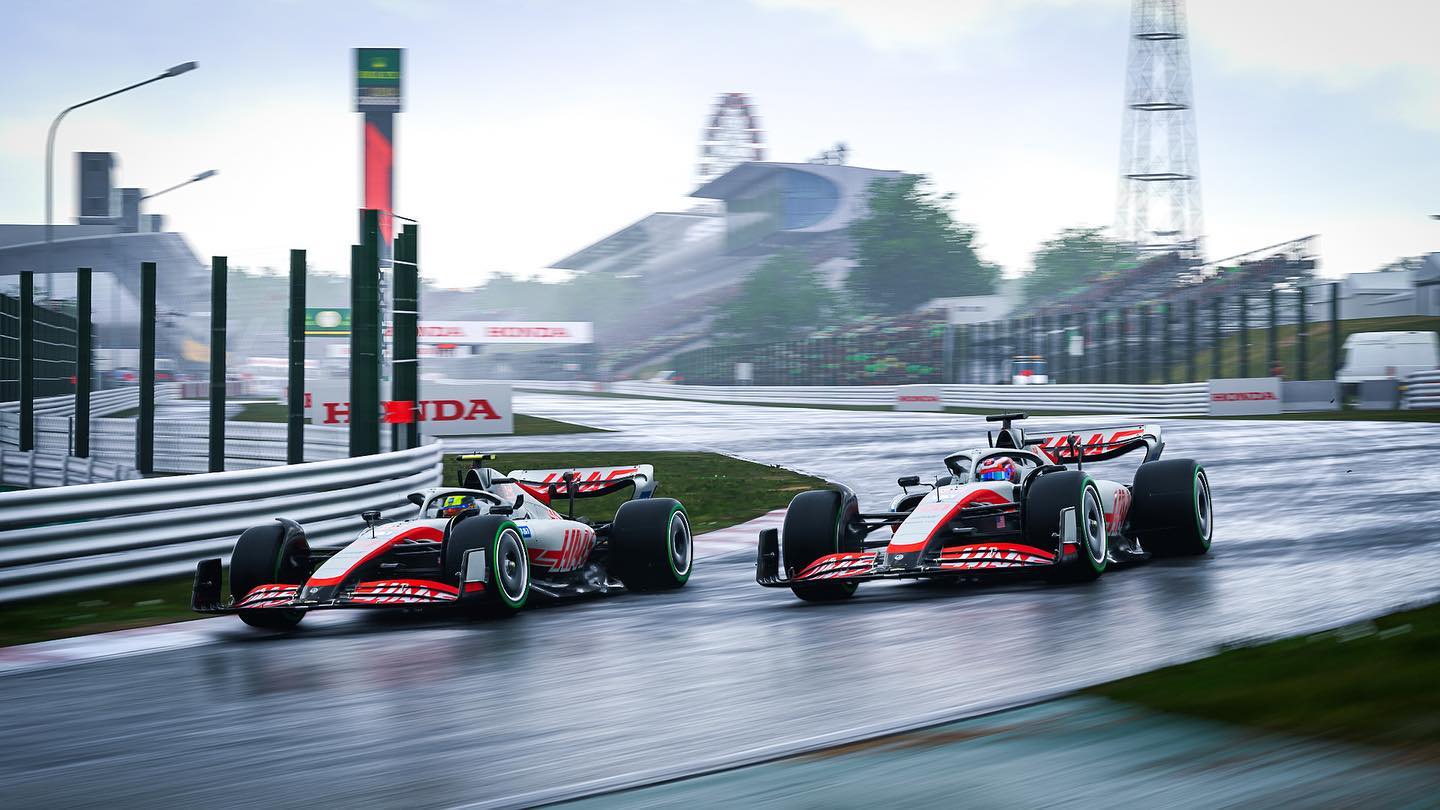F1 Game Car Setups Explained

Parameters of an F1 game car setup
In an F1 game, such as F1 2021 or F1 22, the car setup can be adjusted along several parameters. They are:
- Aerodynamics: Front wing angle and rear wing angle
- Transmission: differential adjustment on throttle and differential adjustment off throttle
- Suspension Geometry: Front and rear camber angle and front and rear toe angle
- Suspension: front and read suspension, front and rear anti-roll barr, and front and rear ride height
- Brakes: Brake pressure and front brake bias
- Tyres: Front and rear tyre pressure
Adjusting car setups on the F1 22 game
Each of the parameters can be adjusted along a certain scale. In the Electronic Arts F1 22 game, the values are:
| Parameter | Value min | Value max |
|---|---|---|
| Front Wing | 0 | 50 |
| Rear Wing | 0 | 50 |
| Differential Adjustment On Throttle | 50 | 100 |
| Differential Adjustment Off Throttle | 50 | 100 |
| Front Camber | -3.50 | -2.50 |
| Rear Camber | -2.00 | -1.00 |
| Front Toe | 0.05 | 0.15 |
| Rear Toe | 0.20 | 0.50 |
| Front Suspension | 1 | 11 |
| Rear Suspension | 1 | 11 |
| Front Anti-Roll Bar | 1 | 11 |
| Rear Anti-Roll Bar | 1 | 11 |
| Front Ride Height | 1 | 11 |
| Rear Ride Height | 1 | 11 |
| Break Pressure | 50 | 100 |
| Front Break Bias | 70 | 50 |
| Front Right Tyre Pressure | 21.0 | 25.0 |
| Front Left Tyre Pressure | 21.0 | 25.0 |
| Rear Right Tyre Pressure | 19.5 | 23.5 |
| Rear Left Tyre Pressure | 19.5 | 23.5 |
Let's dive into what each value does and what a good starting point is!
Aerodynamics
F1 22 Game - Setups - Aerodynamics
The front wing angle affects the amount of downforce generated by the front wing and can impact the car's handling and stability. A higher front wing angle will increase downforce and improve grip in corners, but will also increase drag and decrease straight-line speed.
Transmission
F1 22 Game - Setups - Transmission
The differential adjustment affects the distribution of torque between the front and rear wheels during acceleration (on throttle) and deceleration (off throttle).
- Differential adjustment on throttle: high values increase traction, improve acceleration, but increase understeer
- Differential adjustment off throttle: high values improve stability, reduce oversteer, but reduce throttle responsiveness
Suspension Geometry
F1 22 Game - Setups - Suspension Geometry
Front and rear camber angle
The camber angle affects the amount of grip generated by the tyres and can impact the car's handling and stability. A high negative camber angle will increase grip and improve handling in corners, but will also reduce stability during straight-line driving. In practice, this means:
- Low negative camber angles maximize the contact patch on straights, which increases the car's traction on straight-line acceleration and braking.
- High negative camber angles maximize the contact patch when cornering, meaning when the latitudinal forces make the car roll to the outside.
Front and rear toe angle
The toe angle affects the direction of the wheels and impacts the car's handling and tyre wear.
- A higher front toe increases the car's initial turn-in response ("readiness to turn"). This comes at the expense of straight-line performance, tyre wear and the risk of mid-turn understeer.
- A higher rear toe angle makes the car more stable, specially when accelerating or decelerating. That makes it easier to put power down quickly. The trade-off is straight line performance, tyre wear and, depending on the setup, the initial-turn in response.
Suspension
F1 22 Game - Setups - Suspension
Front and rear suspension
The suspension stiffness affects the car's handling and can impact the car's balance and stability.
- Softer suspensions (low values) are easier to ride over kerbs and hence allow you to drive more aggressively.
- Stiffer suspensions (higher values) increase the responsiveness of your car.
Front and rear anti-roll bar
The anti-roll bar stiffness affects how much the car leans during cornering and can impact the car's balance and stability.
- Stiffer anti-roll bars (high values) will improve responsiveness when turning in corners, but will also lower the overall stability.
- Softer anti-roll bars (low values) will make the car less responsive and harder to turn, but more stable and easier to drive.
Front and rear ride height
The ride height affects the car's ground clearance and can impact the car's aerodynamics and handling. A lower ride height will increase downforce and top speed, but increases the risk of bottoming out (leading to loss of grip and potentially spins).
Brakes
F1 22 Game - Setups - Brakes
Brake Pressure
Brake pressure affects the amount of stopping force generated by the brakes and can impact the car's braking performance. A higher brake pressure will increase stopping force and reduce braking distance, but will also increase the risk of lock-ups and increase wear on the brakes.
Front brake bias
Front brake bias affects the distribution of braking force between the front and rear brakes and can impact the car's balance and stability. A higher front brake bias will increase front-end grip and stability during braking, but will also reduce rear-end stability and increase the risk of oversteer.
Tyres
F1 22 Game - Setups - Tyres
Tyre pressure affects the amount of grip generated by the tyres, the overall tyre wear, and the car's handling. Lower typre pressure generally leads to more grip, but may reduce responsiveness. It also increases the risk of punctures and reduces the tyre lifespan.
Your tyre temperature throughout a session is an important indicator for setting the right tyre pressure. You want to optimize for keeping tyres in the right temperature window of between 90 - 100°C once warmed up.
- Lower your tyre pressure if your average tyre temperature consistently exceeds 100°C
- Increase your tyre pressure if your average tyre temperature consistently falls below 90-92°C
Finding the best F1 22 game car setups
F1Laps is the most popular place to find the best car setups for each track of the F1 game. It contains setups used on real F1 game laps with the fastest lap times, for both time trial and race sessions.


